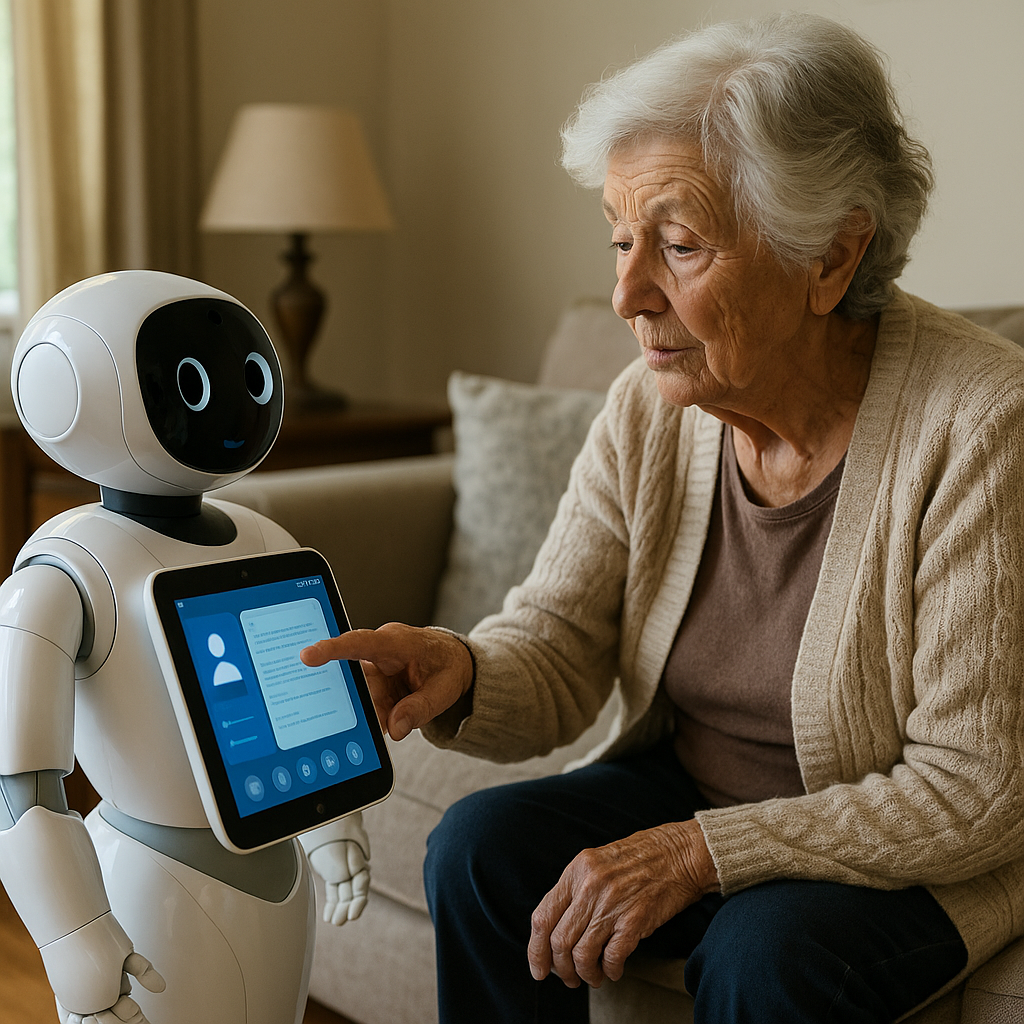Next-gen AI promises personalized support for aging populations
The paper outlines several high-impact areas where LLM-powered agents can revolutionize elderly care, with the first being companionship. Conversational agents can now simulate empathetic dialogue, recall prior conversations, and even engage in reminiscence therapy tailored to the user's memories and preferences. This ability to replicate emotional continuity could help combat the loneliness epidemic plaguing many older adults worldwide.

With the share of people aged 65 and older projected to double by 2050, healthcare systems are under mounting pressure. To address this crisis, researchers are exploring how next-generation artificial intelligence, particularly agentic systems powered by large language models (LLMs), can fill the gap by providing emotionally intelligent, context-aware, and autonomous support to older adults.
In this context, a new study titled “Redefining Elderly Care with Agentic AI: Challenges and Opportunities” and published on arXiv, examines how AI agents with goal-directed reasoning can augment healthcare delivery, cognitive stimulation, emotional well-being, and independence among seniors. Unlike conventional automation, agentic AI is defined by its ability to plan, act, learn, and collaborate over time, offering dynamic, personalised engagement rather than rule-based responses.
How can agentic AI improve daily life and health outcomes for older adults?
The paper outlines several high-impact areas where LLM-powered agents can revolutionize elderly care, with the first being companionship. Conversational agents can now simulate empathetic dialogue, recall prior conversations, and even engage in reminiscence therapy tailored to the user's memories and preferences. This ability to replicate emotional continuity could help combat the loneliness epidemic plaguing many older adults worldwide.
Second is personalised health assistance. Agentic AI can synthesize electronic medical records, wearable sensor data, and behavioral inputs to monitor vital signs, flag anomalies, and recommend real-time interventions. These models can also assist in managing medication schedules, suggesting nutritional changes, and triaging health events based on symptom reporting, potentially easing the burden on human caregivers.
Cognitive engagement is a third domain. AI agents can serve as mental fitness coaches through interactive storytelling, trivia games, and learning exercises that adapt in complexity. For individuals at risk of cognitive decline, this proactive engagement could extend independence and quality of life.
Finally, agentic systems can enable greater autonomy. For seniors with limited mobility, vision, or literacy, multimodal interfaces, such as voice or gesture-based commands, can connect with Internet of Things (IoT) devices to control home lighting, appliances, security systems, and medical equipment. Such integration allows older adults to safely manage their environments with reduced reliance on physical caregivers.
What ethical and technical risks threaten safe deployment?
The integration of Agentic AI in elderly care comes with several pressing concerns, with the Foremost being safety. LLMs have a known tendency to hallucinate or generate false outputs, with observed error rates ranging from 5 to 30 percent. In high-stakes applications like health support or emergency response, such inaccuracies could pose serious harm. The researchers advocate for multi-agent architectures in which separate validator and critic agents cross-check outputs before they reach the user, reducing hallucination risk to below five percent.
Security vulnerabilities are another major issue. Prompt injection attacks, where users craft inputs that override an agent's constraints, could expose sensitive medical or personal data. Jailbreak attacks may manipulate agents into bypassing ethical filters, making seniors especially vulnerable. Proposed countermeasures include sandboxing, zero-trust security frameworks, and adversarial robustness testing.
Privacy is also a critical concern. Agentic AI depends on real-time access to deeply personal data, ranging from biosignals to home sensor inputs. Without strong protections such as federated learning, differential privacy, or blockchain-backed audit trails, these systems could become vectors for surveillance or data breaches.
Additionally, AI models often reflect biases present in their training data. When applied in elderly care, such biases could translate into inequitable treatment recommendations, particularly for marginalized or underrepresented communities. The authors stress the importance of fairness-aware modeling and inclusive dataset curation to avoid discriminatory outcomes.
Finally, interoperability barriers remain. Most healthcare infrastructure still relies on legacy data formats, impeding seamless integration between AI agents and electronic health record systems. Overcoming these silos will require both technical innovation and regulatory standardization.
What steps are needed to safely scale agentic AI for elderly care?
The study provides a roadmap for the responsible deployment of agentic AI in elderly care. This includes designing domain-specific prompt libraries for elderly care to reduce ambiguity and improve response accuracy. These prompts should be validated through user testing and continually updated based on real-world feedback.
Second, human-in-the-loop oversight should remain a non-negotiable design principle. For high-risk decisions, such as medication adjustments or emergency response, agents must defer to a caregiver or clinician, with clear override triggers in place.
Third, the authors propose the adoption of progressive disclosure interfaces, which adapt to user abilities and literacy levels. These interfaces would show simplified options for novice users while offering more complex interactions to tech-savvy seniors or caregivers.
Long-term, multimodal integration will be essential. Agentic AI must evolve to process voice, video, and sensor data holistically to interpret user context in real time. This capacity will allow agents to detect emotion, movement patterns, or signs of distress, offering a layer of proactive care beyond the reach of current systems.
To assess efficacy, the study urges the development of longitudinal benchmarks that evaluate not just technical performance, but real-world outcomes across clinical, emotional, and functional domains.
- READ MORE ON:
- agentic AI in elderly care
- AI healthcare support for seniors
- large language models in elder care
- ethical AI in healthcare
- how agentic AI supports emotional well-being in seniors
- personalized health monitoring using LLMs
- future of AI caregivers in aging societies
- LLM hallucinations in healthcare AI
- FIRST PUBLISHED IN:
- Devdiscourse










